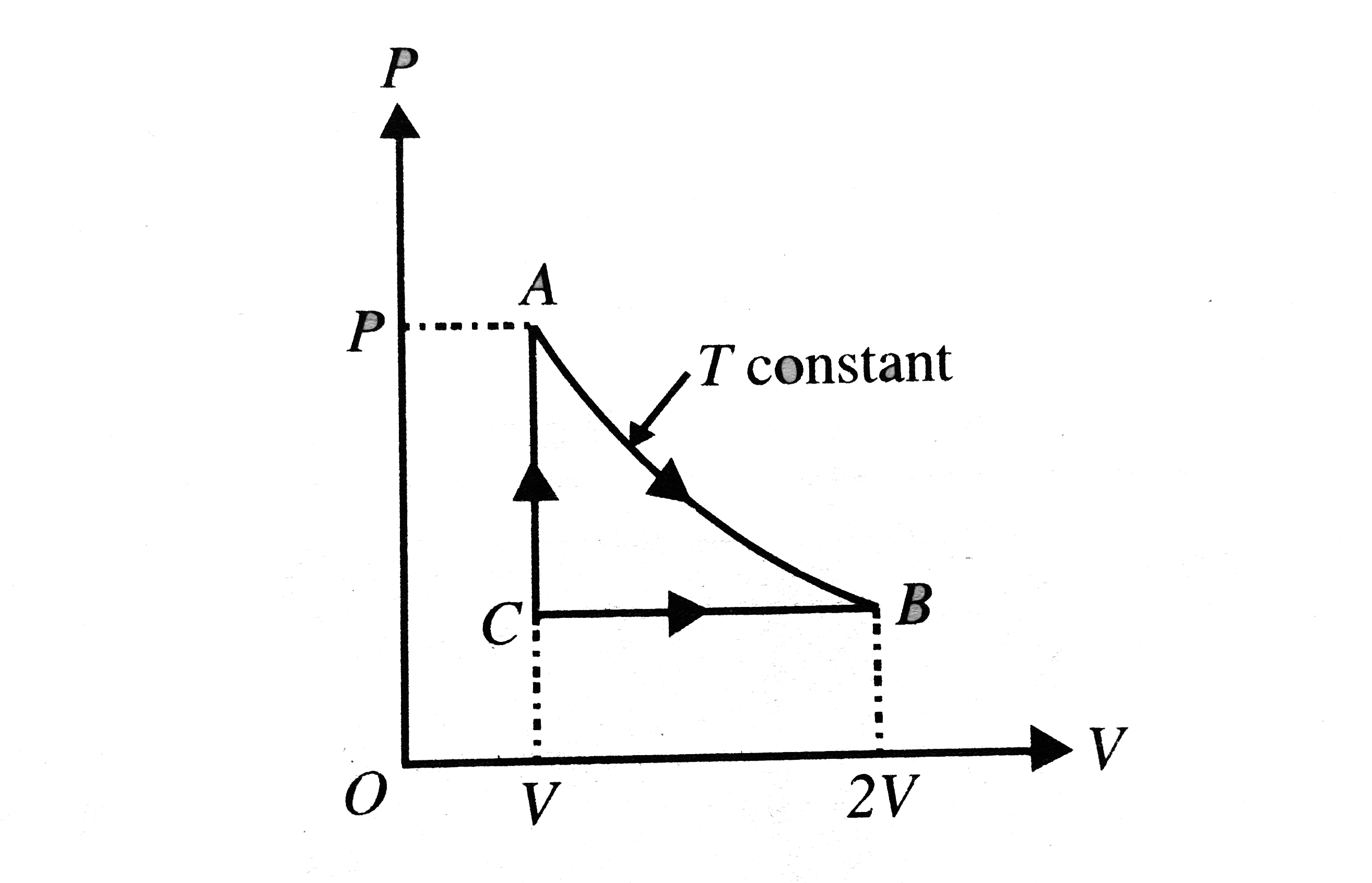An ideal gas expands isothermally from volume V1 to V2 and then it is adiabatically compressed back to its original volume V1. The initial and final pressures of the gas are p1andp3 respectively and the net work done by the gas is W, then
P3>P1W>0
P3<P1W<0
P3>P1W<0
P3=P1W=0
The correct Answer is:C
_E01_400_S01.png)
⇒W<0 & P3>P1
Topper's Solved these Questions
- GEOMETRICAL OPTICSBook:ALLENChapter:GEOMETRICAL OPTICSExercise:EXERCISE - 05 (B) (MCQ)
Explore 9 Videos
- GEOMETRICAL OPTICSBook:ALLENChapter:GEOMETRICAL OPTICSExercise:EXERCISE - 05 (B) (MATCH THE COLUMN)
Explore 3 Videos
- GEOMETRICAL OPTICSBook:ALLENChapter:GEOMETRICAL OPTICSExercise:EXERCISE - 05 (A)
Explore 73 Videos
- CURRENT ELECTRICITYBook:ALLENChapter:CURRENT ELECTRICITYExercise:EX.II
Explore 66 Videos
- GRAVITATIONBook:ALLENChapter:GRAVITATIONExercise:EXERCISE 4
Explore 9 Videos
Similar Questions
An ideal gas expands isothermally from volume V1 to V2 and is then compressed to original volume V1 adiabatically. Initialy pressure is P1 and final pressure is P3. The total work done is W. Then
View SolutionAn ideal gas expands isothermally from volume V1 to V2 and is then compressed to original volume V1 adiabatically. Initialy pressure is P1 and final pressure is P3. The total work done is W. Then
View Solution
Knowledge Check
A mass of ideal gas at pressure P is expanded isothermally to four times the originl volume and then slowly compressed adiabatically to its original volume. Assuming γ to be 1.5 , the new pressure of the gas is
A0.58333333333333BPC0.66666666666667DP/2A monoatomic gas is compressed adiabatically to 1(4)th of its original volume , the final pressure of gas in terms of initial pressure P is
A7.08 PB8.08 PC9.08 PD10.08 P
What is meant by (i) an adiabatic and (ii) an isothermal change of state of a gas. An ideal gas is expanded adiabatically from volume V1 to volume V2 is then compressed isothermally to its original volume V1 Draw the P-V curves representing the above changes. How will you show. in your graph the net work done by the gas?
View SolutionA monatomic gas at a pressure P, having a volume V expands isothermally to a volume 2 V and then adiabatically to a volume 16 V. The final pressure of the gas is ( take γ=53)
View SolutionA monoatomic gas at pressure P1 and volume V1 is compressed adiabatically to 18th of its original volume. What is the final pressure of gas.
View SolutionAn ideal gas of volume V and pressure P expands isothermally to volume 16 V and then compressed adiabatically to volume V . The final pressure of gas is [γ=1.5]
View SolutionOne mole of a gas is carried through the cycle shown in Fig. The gas expands at constant temperature T from volume V to 2V. It is them compressed to the initial volume at constant pressure and is finally brought back to its original state by heating at constant volume. Calculate the work done by the gas in complete cycle.

View SolutionIf a gas of a volume V1 at pressure p1 is compressed adiabatically to volume V2 and pressure p2, calculate the work done by the gas.
View Solution